Snacks that make you shrink (or grow gigantic), mad tea parties, murderous croquet: Alice’s Adventures in Wonderland is a bonkers enough story on its own that it’s impressive to see the ways in which so many authors have been able to retell it.
In these thrillers and pastiches and history lessons, Alice Liddell is a princess on the run, a mad inmate, or only a tangential part of the story; some retellings focus on other citizens of Wonderland, from the maligned White Rabbit to the misunderstood Queen of Hearts. No matter which of the many ways into Wonderland these writers choose, the stories are as enticing as a bottle that says DRINK ME.
Heartless by Marissa Meyer
Buy the Book
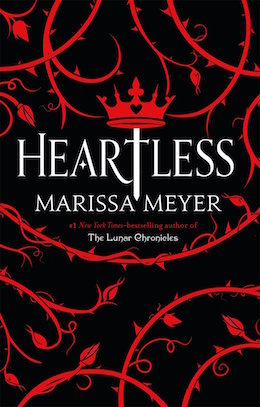

Heartless
Marissa Meyer invents a back story for Wonderland’s primary antagonist: Catherine, who would rather create otherworldly confections in her dream bakery than accept the King of Hearts’ proposal. While Meyer’s Lunar Chronicles series used the familiar fairy-tale scaffolding of Cinderella, Red Riding Hood, and others’ stories to climb straight into space, this standalone novel is different—it’s not about space, but time. Readers know that Cath has no choice but to eventually become the brutal, nonsensical Queen of Hearts; but, as Mahvesh Murad wrote in her review, “It isn’t hard to imagine how she will end up, when she must give up the life she had imagined as a valid alternate—full of a cold, heartless hatred that clouds all judgment.”
Mad Hatters and March Hares, edited by Ellen Datlow
Buy the Book
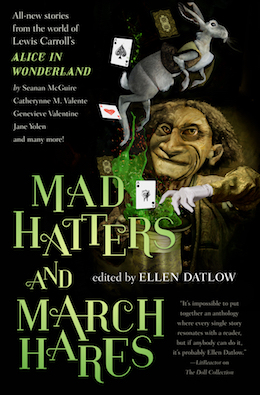

Dave McKean’s cover about sums up the tone of Ellen Datlow’s anthology: whimsical, nostalgic, yet undeniably creepy. Some of the collection’s contributors return to Wonderland, like Angela Slatter’s examination in “Run, Rabbit” of the White Rabbit’s fate for bringing Alice there in the first place, or Matthew Kressel’s surreal tour of Wonderland as theme park in “In Memory of a Summer’s Day.” Others hook into the story’s legacy and archetypes to go super-meta, from the Cheshire Cat falling down a hole and turning into a little girl (Seanan McGuire’s “Sentence Like a Saturday”) to Alice Liddell and Peter Pan having a heart-to-heart (“The Flame After the Candle” by Catherynne M. Valente). Some of the characters bear no resemblance or connection to Alice and her bizarre friends, but their stories—Ysabeau Wilce’s tamale girl in her own portal fantasy (“The Queen of Hats”), Katherine Vaz’s cafe owner mourning her murdered daughter (“Moon, Memory, Muchness”)—make readers want to follow them down the rabbit-hole.
After Alice by Gregory Maguire
Buy the Book
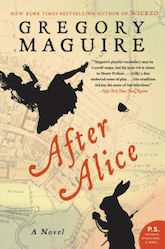

The moment that Alice tumbles down the rabbit-hole, she leaves the real, logical world behind. But that world doesn’t stop spinning—so how did 1860s Oxford react to her disappearance? Indifference, mostly. In Gregory Maguire’s imagining, Alice’s fifteen-year-old sister Lydia is too busy serving as the lady of the house after their mother’s death to notice her curious younger sister has slipped away. Alice’s playmate Ada does find the rabbit-hole, but she’s late enough that she must navigate Wonderland on her own, acting as the Orpheus to Alice’s Eurydice in her attempts to drag her friend back to the light.
The Looking Glass Wars by Frank Beddor
Buy the Book
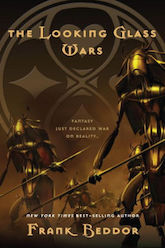

In a clever reversal, heir to the Wonderland throne Alyss Heart and her bodyguard Hatter Madigan go through the looking glass… to the other side. But upon their arrival in Victorian London, the two are separated, with Alyss left only with an aspiring author to hear her grievances. But where she hopes that he’ll publicize her story—of her parents’ murders at the hand of her aunt Redd, of tea parties replaced by bloody battles—he instead gets every detail horribly wrong. Can Hatter find Alyss in the real world? Can she harness her powers of Imagination when not in Wonderland?
Alice by Christina Henry
Buy the Book
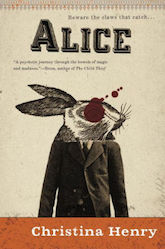

Placing Alice in a mental institution has been done before, not least because it seems like the most appropriate reaction to one’s daughter emerging from a rabbit-hole declaring she has seen all manner of impossible things. But what if young Alice emerges with (gulp) a flayed face and unable to say anything but “the rabbit” over and over and over again? And what if her fellow patients at the institution include a Mad Hatcher she speaks to through walls, and the mysterious creature known only as the Jabberwock? Christina Henry’s violent revenge tale is not for the faint of heart, but if you make it through, you’ll be rewarded with the sequel, Red Queen.
Automated Alice by Jeff Noon
Buy the Book
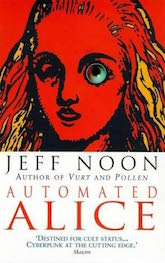

2940044772052
“I suppose that Carroll’s rabbit hole and looking glass can be seen as a Victorian version of Gibson’s ‘jacking-in’ to Cyberspace,” Jeff Noon told Spike magazine in 1996, summing up his thought process behind Automated Alice. Both a “trequel” to Carroll’s two adventures as well as the third installment of his own series that began with Vurt, the book sees Alice step through a grandfather clock into alternate-universe 1998 Manchester. There, she encounters a strange robotic doppelgänger powered by termites (the eponymous Automated Alice) and gets framed for a series of murders when the jigsaw pieces found on the bodies match one of her puzzles. Noon seeks to pay homage to Carroll not just with the characters, but with the writing style and accompanying illustrations by Harry Trumbore.
Alice in Sunderland by Bryan Talbot
Buy the Book
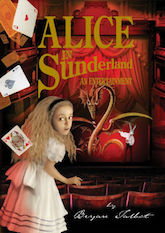

The greatest shipbuilding port in the world during Lewis Carroll’s time and a supposed inspiration for his Alice books (it literally rhymes with “Wonderland”), Sunderland possesses a rich history. In his 300-page, nonlinear graphic novel, writer-illustrator Bryan Talbot delves into Carroll’s famous visits and the legacy of the area itself in relation to art and imagination. To do so, Talbot must draw himself into the narrative; true to the book’s subtitle—An Entertainment—he takes on the roles of both Traveler and Storyteller for what Teen Reads describes as “theatrical performance with academic lecture.” Fitting with Alice’s journey, it’s the kind of topsy-turvy tour that readers should just give themselves over to, and all the nonsense will give way to sense.
What are your favorite Alice in Wonderland retellings?










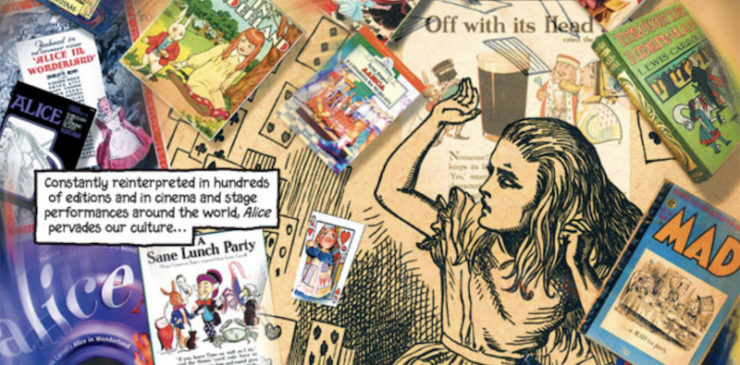
Golden Afternoon, a short story by Andrzej Sapkowski. POV of Cheshire cat!
A shout-out must be made here to The Oz-Wonderland War, a three-issue comics miniseries starring DC Comics’ Captain Carrot! and the Zoo Crew as well as a host of Ozian and Wonderland characters; the trilogy does justice to all three of its source canons and counts for me as something of a lost classic.
The ennie winning table top RPG, ‘A Red and Pleasant Land’ creates an undead infested, post-apocalyptic (the vampires have eaten most living beings) version of wonderland, where four royal vampire houses (of the Heart Queen, the Red King, the Colorless Queen, and the Pale King) are engaged in a ‘slow’ war across cricket fields, gardens, and the surfaces of looking glasses, and beneath running streams via dungeon passages.
I second the recommendation for ‘Alice in Sunderland,’ especially for Anglophiles who live far away from England. It provides a view from inside Talbot’s head, looking out from a very English perspective.
I wouldn’t call it a non-linear graphic novel so much as a collection of short graphic pieces, fiction and non-fiction, all tied to the Sunderland locale and to Alice’s storyteller, ‘Lewis Carroll.’ They vary in storytelling approach AND visual style. You can pick up the book and start reading at any piece. If one doesn’t work for you, the next one might!
This is one where I don’t want to read any of the spinoffs/adaptations, but will stick with the original. However, I highly recommend “The Annotated Alice” – it’s fascinating to learn the details behind some of the things mentioned, see the original poems vs. the parodies in the story, and find out just why certain things would have been quite funny to the children originally reading it! Also the opportunity to read multiple language translations of “Jabberwocky”.
Actually, there is one “spiritual sequel” I must recommend: “Alice Through the Needle’s Eye” by Gilbert Adair. Very much reads like it could have been Lewis Carroll’s work, and even the illustrations are very much in the style of Tenniel. The main gimmick is to spot encounters with all the letters of the alphabet.
Let’s try Japan for an animated alternative.
Jeff Noon’s take on Alice will always be the one for me, and you can see Carroll’s influence throughout Noon’s other works as well.
An extension of the original Alice, in the style of the original.
https://m.facebook.com/photo.php?fbid=10214645551470273&id=1167415992&set=a.1577639598716.76167.1167415992&source=48
It’s not a book, but just this year a hypertext piece was released for the annual Interactive Fiction Competition (IF Comp), called Alice Aforethought by Hanon Ondricek. The player interacts with Alice and must help her fix something she’s accidentally done by going through the looking glass and navigating through many of the classic Wonderland settings and puzzles. The presentation is slick and polished and the puzzles are charming but often tricky. The author quotes from the original but also nails the tone in his own voice.
The game can be played here: https://ifarchive.info/if-archive/games/competition2017/Alice%20Aforethought/index.html
You might also include the three Zenescope series, Beyond Wonderland and Escape from Wonderland, and Return to Wonderland. . They originated in comic form but are collected in graphic novel form.
Also, re The Looking Glass Wars, I knew there was a sequel, Seeing Redd. (It’s on my bookshelf.) A quick check of Amazon reveals there’s a third book in the series, ArchEnemy: The Looking Glass Wars, Book Three. Fascinating stuff. I read the first but got distracted and never made it to the second.
This may be considered a stretch to many, but Catherynne Valente’s Fairyland series is in the spirit of Lewis Carroll and of course , Wonderland. when I read her work I literally said “Wow ! she caught his essence!” Let me preface the following with stating that I love Wonderland with the sincerest of heart, but I do believe the authors of all the spinoffs and retellings are not so much searching for Wonderland as much as they are seeking the spirit of Carroll that made Wonderland possible. And yes, as a die hard, I will devour all retellings and spinoffs. :)
The Splintered series by A.G. Howard is really good. It’s about Alice’s descendents.
There’s Vixy and Tony’s classic “The Girl That’s Never Been”, video here:
https://www.youtube.com/watch?v=CKDR6pciwy8
Lyrics and music here [track 7]: https://vixyandtony.bandcamp.com/album/we-are-who-we-are
I’m surprised no one has mentioned “American McGee’s Alice” PC game. It is more of a sequel with Alice going back to Wonderland after spending years in an insane asylum and everything there being twisted by her insanity.
@13: Beat me to it!
But don’t forget Cheshire, the short story written by Bill Kte’pi as a gift for Vixy, and became the inspiration for the song.
And if we’re going to dive into Alice-inspired music, there’s always S.J. Tucker’s fabulous Cheshire Kitten.
You missed “Alice’s Bloody Adventures in Wonderland”
I’m surprised The Looking Glass Wars didn’t make the list